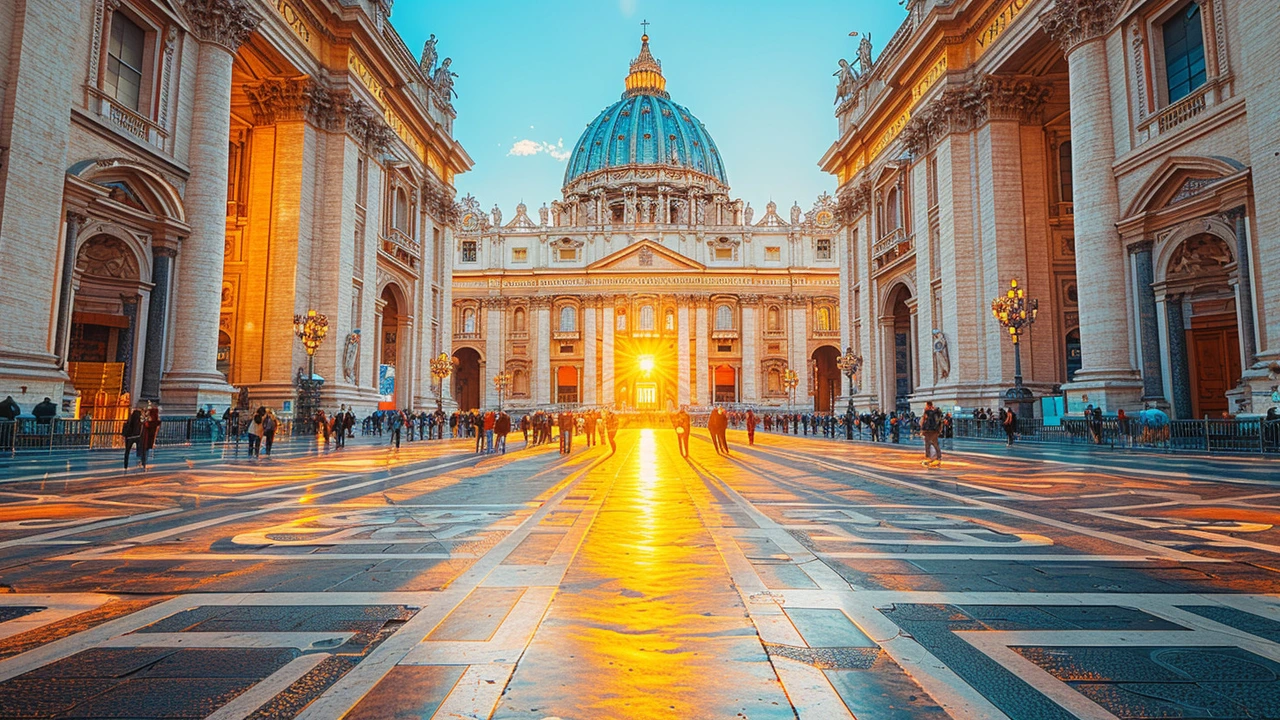Exploring the Grandeur of Baroque Architecture: A Comprehensive Guide
 Feb, 13 2024
Feb, 13 2024
The Origins and Evolution of Baroque Architecture
Imagine wandering through the heart of Rome, where the intricate facades and grandiose designs of buildings whisk you away to a bygone era. This experience encapsulates the essence of Baroque architecture, a style that originated in Italy during the late 16th century. Born out of the Counter-Reformation, the Catholic Church used Baroque architecture as a sensory tool to convey religious themes and inspire devotion among the masses. Its name, 'Baroque,' thought to derive from the Portuguese word 'barroco' meaning 'irregular pearl,' perfectly embodies the style's penchant for complexity and dramatic effect.
Baroque architecture quickly spread beyond Italy, each region adapting the style to its cultural context. France, under the rule of Louis XIV, embraced a more classical approach to Baroque, emphasizing symmetry and order, while in Spain, Baroque took on a more decorative and elaborate form with richly adorned churches. The style's influence reached as far north as Russia, where it became known as Russian Baroque, characterized by its lavish use of color and decoration. This wide adoption and adaptation underscore the versatility and enduring appeal of Baroque architecture.
Key Characteristics of Baroque Architecture
Stepping into a Baroque building is like entering another world - a world where light, space, and form intertwine to create a dynamic and emotional experience. One of the hallmark features of Baroque architecture is its use of curves and free forms, breaking away from the rigidity of the Renaissance. Buildings often have oval spaces, undulating walls, and expansive colonnades that guide the eye and evoke a sense of movement.
Another defining element is the dramatic use of light, both natural and artificial, to highlight textures, colors, and architectural details. Churches glow with gilded interiors and mystic chiaroscuro effects, creating an otherworldly atmosphere. Furthermore, Baroque buildings are adorned with a lavish display of ornaments - theatrical facades, elaborate frescoes, and intricate sculptures that tell stories and evoke emotions. This grandiosity was not just an artistic choice but a deliberate effort to communicate power, authority, and religious fervor.
Masterpieces of Baroque Architecture
Among the myriad of Baroque buildings that dot the landscapes of Europe, some stand out for their historical significance and architectural grandeur. St. Peter's Basilica in Vatican City, with its iconic dome designed by Michelangelo, epitomizes the Baroque's aspiration towards the heavens. The Church of San Carlo alle Quattro Fontane in Rome, by Francesco Borromini, showcases the style's innovative use of space and light, with a complex oval dome and undulating facade that challenge traditional architectural norms.
Not to be overlooked, the Palace of Versailles in France is a testament to Baroque's role in depicting royal power and splendor. Its perfectly symmetrical layout, extensive gardens, and opulent Hall of Mirrors reflect Louis XIV's grandiose vision. In contrast, the Winter Palace in St. Petersburg highlights the adaptability of Baroque, incorporating Russian cultural elements into its lavish design. These masterpieces, among others, not only define the Baroque era but also continue to inspire awe and wonder today.
Baroque Architecture Today: Preservation and Influence
In today's fast-paced world, Baroque architecture remains a poignant reminder of a time when artistry and grandeur took precedence. Preservation efforts are crucial in maintaining these architectural treasures for future generations to appreciate. Many Baroque buildings are protected as UNESCO World Heritage Sites, ensuring their structural and aesthetic integrity.
The influence of Baroque architecture extends beyond its historical period, impacting modern design principles and inspiring contemporary architects. Its emphasis on emotion, space, and spectacle has found new expressions in modern public buildings and cultural institutions, proving the timeless appeal of Baroque's dramatic flair. By embracing the bold and innovative spirit of Baroque, today's architects continue to push the boundaries of design, much like their predecessors did centuries ago.